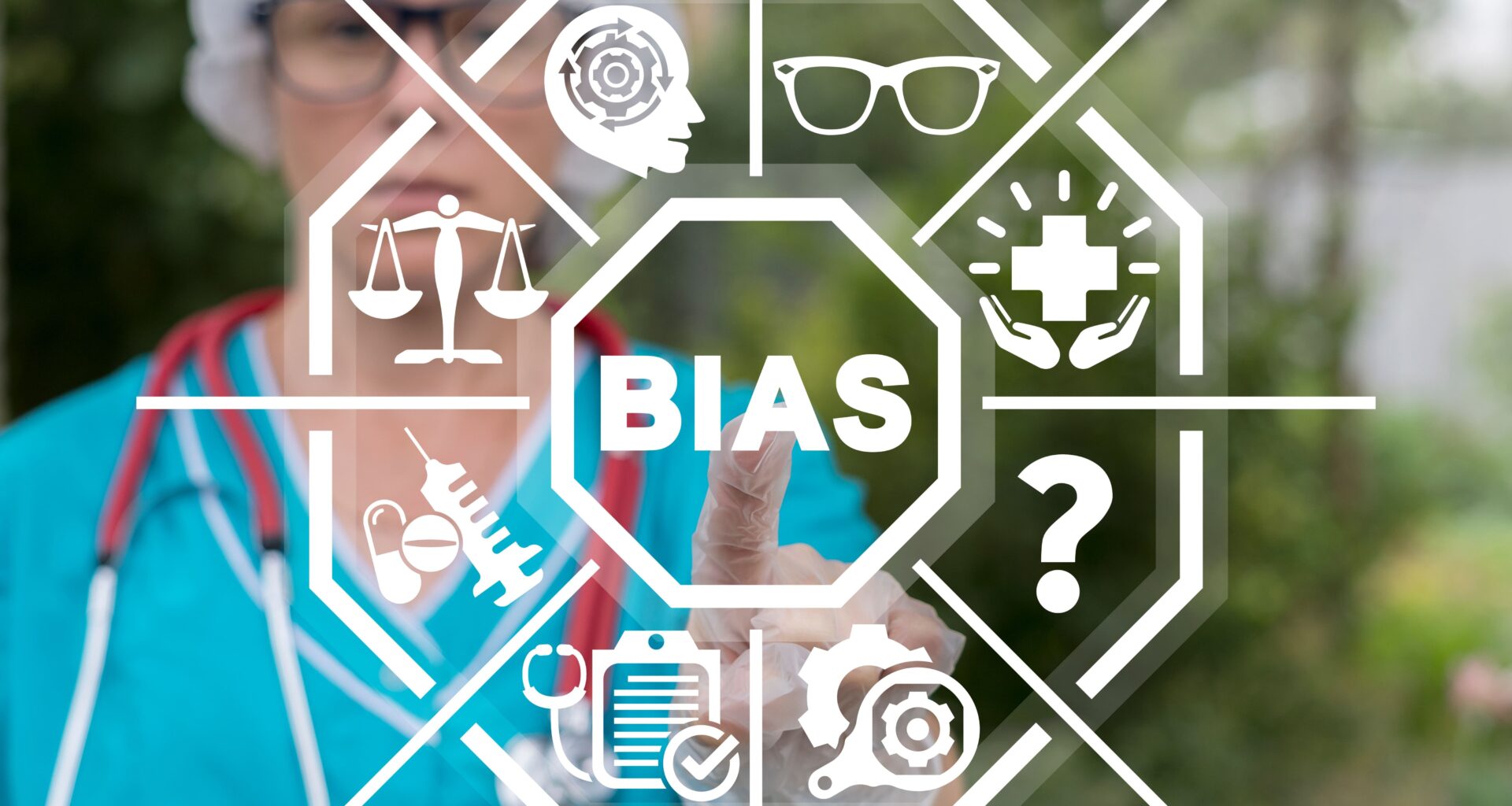Alarming disparities plague the healthcare landscape in the United States. KFF reports that Black, Hispanic, and American Indian/Alaska Native (AIAN) people consistently fare worse than their White counterparts across a broad range of health outcomes. This disparity extends beyond healthcare access and treatment, encompassing crucial social determinants of health like food security and mental health services. These concerning statistics highlight the need to address a key contributing factor: healthcare bias.
This blog delves into the world of implicit bias in healthcare professionals, exploring its impact on patients and outlining practical strategies to create a more equitable healthcare system.
Before this, let’s understand the basics. Healthcare bias is any prejudice or preconceived notion that influences a healthcare professional’s judgment or treatment decisions. This can have a profound consequence on patient care. While some biases are explicit and conscious, a more grave form known as implicit bias can have a profound effect on patient outcomes.
Understanding Implicit Bias
Implicit biases are unconscious associations we hold towards certain groups of people. These biases are often formed through our upbringing, social conditioning, and exposure to stereotypes. Unlike explicit biases, which involve conscious prejudice, implicit biases operate outside of our awareness and can influence our thoughts and behaviors even if we consciously believe otherwise.
For example, a doctor who unconsciously associates a particular ethnic group with a higher pain tolerance could possibly undertreat pain in patients from that group. This is just one example of how implicit bias can manifest in healthcare settings, potentially leading to misdiagnosis, inappropriate treatment recommendations, and, ultimately, poorer health outcomes for patients.
The Data On Implicit Healthcare Bias
Studies examining healthcare professionals’ biased approach and care delivery revealed patterns of concern. Care providers with stronger implicit biases were more likely to recommend different treatments for patients from different backgrounds, suggesting a lack of consistency in their approach. Furthermore, these providers seemed to have lower expectations for building strong relationships with certain patients, potentially hindering communication and trust.
The impact of implicit bias extends beyond treatment recommendations. Research also indicates disparities in pain management based on a patient’s race. This raises grave concerns about the fairness and effectiveness of pain treatment for all patients. Additionally, studies suggest that providers with stronger implicit biases might communicate less effectively with certain patients, further hindering the patient-provider relationship and potentially leading to misunderstandings or missed diagnoses.
Identifying Own Implicit Biases
The first step towards mitigating implicit bias is self-awareness. Fortunately, several tools and resources are available to help healthcare professionals identify their own implicit biases. The Harvard Implicit Association Test (IAT), a popular and reputable tool, measures unconscious associations towards various social groups. While the IAT is not a definitive diagnostic tool, it can be a valuable starting point for self-reflection.
Healthcare Solutions – Strategies To Address Implicit Bias
Combating implicit healthcare bias requires a multi-pronged approach. Here are some key strategies currently used in the field:
Education And Training: Ongoing workshops and training programs can promote implicit bias and its impact on healthcare delivery. By understanding how implicit biases work, healthcare professionals can become more mindful of their own biases and actively work to mitigate their influence.
Standardized Practices And Protocols: Evidence-based guidelines and protocols can help reduce bias in decision-making. For instance, standardized pain management protocols can ensure that pain treatment decisions are based on objective criteria rather than subjective judgments influenced by implicit bias.
Patient-Centered Care: Building strong patient-provider relationships and encouraging open communication can help counter biased assumptions. When healthcare professionals take the time to understand each patient’s unique needs and experiences, they are less likely to rely on stereotypes or generalizations.
Technology Solutions: Technology has the potential to play an instrumental role in reducing bias in certain areas. For instance, using electronic health records (EHRs) can help ensure that all relevant patient information is considered during the decision-making process, potentially reducing the influence of unconscious biases.
Bottomline
Implicit bias is a complex issue with significant consequences for patient care. Fortunately, by acknowledging the problem, taking steps to identify our own biases, and implementing strategies like those mentioned above, we can work towards creating a healthcare system that is more equitable and just for all.
Healthcare professionals have a responsibility to learn and improve continuously. By working together, we can build a healthcare environment where implicit bias no longer hinders patient care. Let’s all be champions for a more equitable healthcare system.
Frequently Asked Questions
1. How can healthcare professionals identify and mitigate implicit bias in their practice?
Self-awareness is crucial. Resources like the Harvard Implicit Association Test (IAT) can help healthcare professionals identify potential areas of bias. Additionally, ongoing education and training programs on implicit bias can equip them with strategies to counteract its influence on their decisions.
2. What recourse does a patient have if they suspect they’ve been impacted by implicit bias in a healthcare setting?
Patients who feel they’ve been treated unfairly based on race, ethnicity, gender, or another factor should advocate for themselves. They can ask questions, express their concerns, and request clarification on treatment decisions. If necessary, they can file a complaint with the healthcare facility or relevant oversight body.
3. What systemic approaches can be implemented to address healthcare bias?
Standardization of practices and protocols can help reduce bias in decision-making by ensuring all patients receive care based on objective criteria. Furthermore, building a culture of diversity and inclusion within healthcare institutions is essential to promote fair treatment for all patients. Finally, supporting policies that address social determinants of health, such as access to education and healthy food, can contribute to a more equitable healthcare system overall.
[Related Read: Fairness In AI With Bias Mitigation Strategies]










